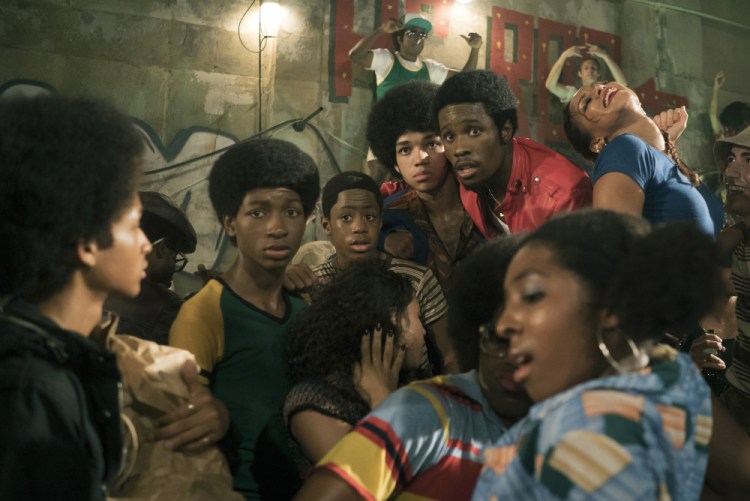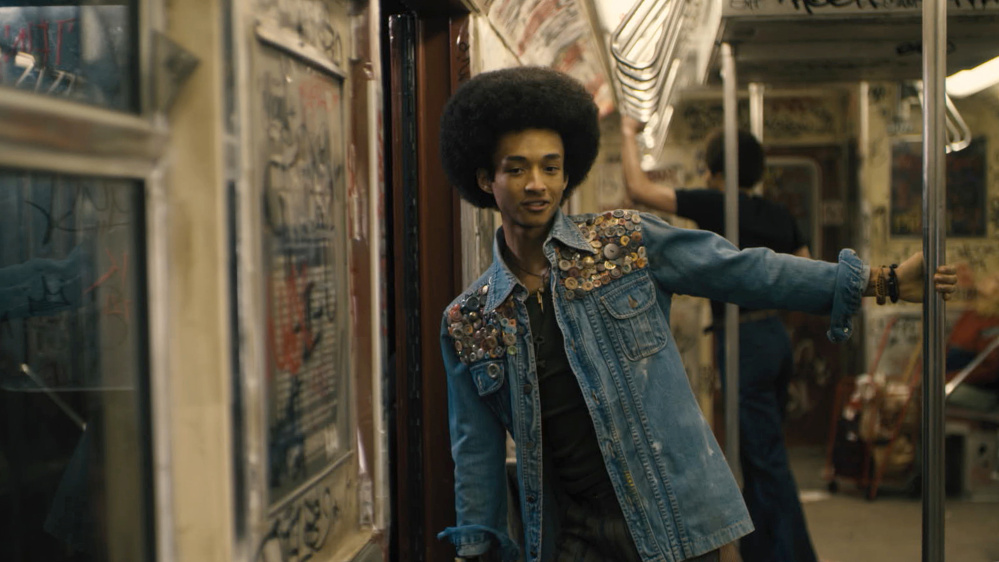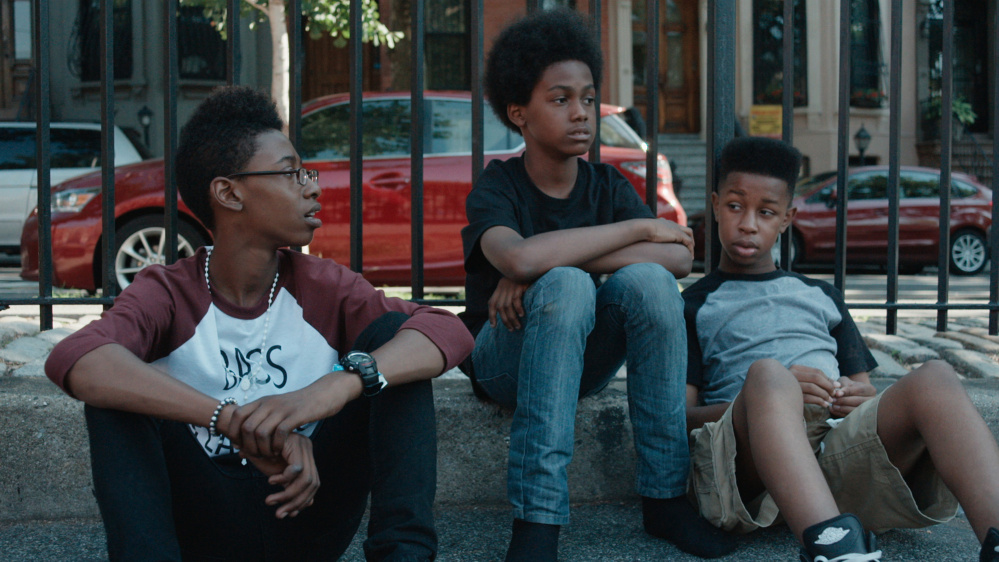Baz Luhrmann knows what you’re thinking.
“I’m probably the least obvious person you might think to be curating and trying to get this story told,” he said of his Netflix saga “The Get Down.”
Indeed, the Australian director is known for fanciful retellings of classic stories, such as “Romeo + Juliet,” “Moulin Rouge!” and “The Great Gatsby” – a far cry from a TV series about the beginnings of hip-hop in the Bronx.
“Curating” is an apt description of what Luhrmann has done for “The Get Down,” which began streaming its first six episodes on Friday, with another six expected to drop next year. Luhrmann put his theatrical, grandiose style into the project, which reportedly cost about $120 million (Netflix declined to comment). But the series is also grounded in historical accounts and an authenticity owed to collaborators such as Grandmaster Flash, Nas, Kurtis Blow, DJ Kool Herc, Rahiem (of Furious Five fame) and writer-filmmaker Nelson George, a noted hip-hop expert.
“The Get Down” is the rare television series with a young cast that’s predominantly black and Latino. “The story had to be told from the kids’ point of view, because people who invented this new form, this art, they were young,” Luhrmann said.
It begins in 1977, the height of disco – and amid a sense of discord in New York City. Ezekial “Zeke” Figuero (Justice Smith of “Paper Towns”) is a smart and sensitive high-school student who writes stirring poetry that helps him cope with a haunting childhood tragedy. Zeke is in love with his longtime friend, Mylene (newcomer Herizen Guardiola), a gifted singer whose disco aspirations are at odds with the wishes of her strict, religious father (Giancarlo Esposito) – and her own feelings for Zeke.
Zeke struggles to envision a promising future – the result of both standard adolescent ennui and a lackluster support system. But he meets a street-smart graffiti artist dubbed Shaolin Fantastic (Shameik Moore of “Dope”), who wears bright red Puma sneakers and glides through the Bronx like a graceful ninja. He introduces Zeke to “the get down” – an underground world of DJs and “wordsmiths.” Shaolin – in moniker and aesthetic – is a nod to the popular kung fu movies of the era and the enduring cultural intersection later embodied by Wu-Tang Clan.
That intersection is one of the many details that Flash, an associate producer, and other consulting legends lent to the project. (The name Grandmaster is a nod to the honorific martial arts title.) They also spent time teaching the young cast members how to rap and command turntables.
The series includes a young Flash (Mamoudou Athie) – an up-and-coming DJ in the late ’70s – teaching Shaolin and Zeke to mark a specific section of a record with a crayon, a crude technique Flash developed to help him keep track of the drum solos he wanted to highlight on the turntables.
Flash didn’t know Luhrmann by name when he was first asked to consult on “The Get Down,” but “The Great Gatsby” was one of his favorite films.
“I look at this white guy from Australia and I say, ‘Why?’ ” Flash recalled. ” ‘Why do you want to do this, and why should I do it with you?’ ”
Luhrmann told Flash that he wasn’t interested in telling a story about hip-hop in the ’80s – he wanted to know what came before that. The approach fit with an analogy that Flash likes to use, in which ’80s hip-hop is a cake – a now-billion-dollar confection that has fed countless artists, producers and fans of the genre – and he and his peers in the ’70s were the bakers.
Here was Luhrmann asking about the recipe. In particular, the director wanted to know how such an influential culture was born at a time of poverty and struggle. Flash signed on after Luhrmann agreed to consult with more of his fellow hip-hop pioneers.
“The Get Down’s” fictional universe is set against real-life figures and events – buildings burning across the South Bronx; a young Ed Koch railing against graffiti and surging crime during a (faux) evening news report about an increasingly heated mayoral race; the July ’77 blackout that caused widespread mayhem across the city’s five boroughs.
George, a supervising producer and a native New Yorker who was 20 in 1977, recalled how he and his friends maintained their laser focus on achieving their dreams. “We weren’t worried about ‘Well, is the city going to go bankrupt?’ We weren’t worried about these geopolitical questions,” he said. “The sense of possibility that the show, I think, radiates, comes out of the sense of the way teenagers look at the world.”
As a result of that outlook, music is the show’s undercurrent. In flashes to 1996, we see a grown-up Zeke (Daveed Diggs of “Hamilton”) narrating the story while onstage at Madison Square Garden. Zeke’s flow is unmistakably that of executive producer Nas, who also wrote the raps. Other rhymes were penned by Kurtis Blow. On the disco front, the show features classic hits such as “Turn the Beat Around” and new songs from veteran producer Nile Rodgers.
“There’s this idea that we talked about called a weave in the show, where one or two or three different storylines are united through music and pushed forward through music,” George said. “For Baz, it’s not just wallpaper – it is text in a very profound way.”
Luhrmann’s films are known for integrating genre-bending music – Jay-Z’s 2001 song “Izzo (H.O.V.A.)” merged with jazz for a surreal scene on New York City’s Queensboro Bridge in “The Great Gatsby.” “Romeo + Juliet” indelibly featured a soulful choral arrangement of Prince’s “When Doves Cry.”
But “The Get Down” – Luhrmann’s first television project – provided a particular set of challenges. In July, Variety reported that the production, which began more than two years ago and went through multiple showrunners, had stalled so many times that some writers had nicknamed it “The Shut Down.”
Luhrmann attributes many of the issues to the sheer scale of the project – from the costs and logistics behind creating new music and licensing existing songs to hiring the show’s bevy of collaborators. Luhrmann had initially envisioned a more limited role for himself, but eventually he agreed to go all-in. “I tried many ways to get it going, but the only way to really do that was to put my brand on it,” he said.
Luhrmann, after all, had come up with the idea for “The Get Down,” inspired by a theme that permeates the series: youthful optimism. About a decade ago, Luhrmann, long fascinated with New York City, saw a photograph of young kids in b-boy stance that started him on this path to discover hip-hop’s origins.
“I think more than anything what these kids brought to us was a revolution of arts that affected me even all the way in Australia,” he said, “and I feel like it’s time to celebrate them.”
Send questions/comments to the editors.





Success. Please wait for the page to reload. If the page does not reload within 5 seconds, please refresh the page.
Enter your email and password to access comments.
Hi, to comment on stories you must . This profile is in addition to your subscription and website login.
Already have a commenting profile? .
Invalid username/password.
Please check your email to confirm and complete your registration.
Only subscribers are eligible to post comments. Please subscribe or login first for digital access. Here’s why.
Use the form below to reset your password. When you've submitted your account email, we will send an email with a reset code.